El coastline of the Basque Country It is a special territory that is well worth a trip due to the abundance and variety of places of interest.
In addition to the cities that we all know, such as San Sebastián y Bilbao, there are small seaside towns, wide beaches and, also, some sections away from the roads that are a true natural treasure.
Those interested in geology know well about the beauty of the flysch, a German word that designates a type of rock formations created by sea erosion in terrain in which rocks of different composition and hardness alternate.
La basque coast It is one of the best places to discover and enjoy this peculiarity of nature, which creates a unique landscape.
There are many places where you can see the flysch.
In our last trip to the Basque Country We decided to explore the stretch of coastline between Hondarribia y pasaia, In the Guipuzcoa province.
In this area, the highway runs inland, leaving several kilometers of coastline intact.
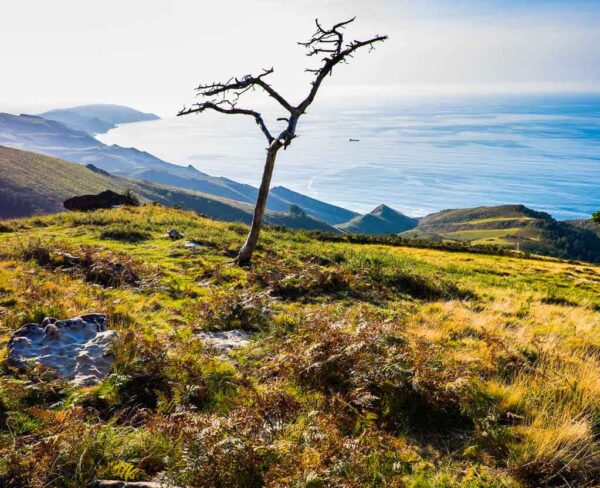
All the information in detail
Mount Jaizkibel in Guipúzcoa
The reason that the road that is going to San Sebastián go inside is due to Mount Jaizkibel, which arises directly from the Cantabrian Sea.
That is why this stretch of coast is one of the most splendid and solitary in the entire region. Iberian Peninsula.
If they tell us that a mountain is 543 meters high, we will think that it is something without much importance.
But if we see that it is right on the edge of the sea, we discover that it is the highest coastal mountain de todo el Cantabrian.
In fact it is one of the most prominent coastal mountains in all of Europe, second only to the Peninsula by Vixia Herbeira, on the Galician Atlantic coast.

The mountains that emerge at the edge of the sea are true lighthouses for sailors and fishermen in the surrounding area, and they create a very attractive space for travelers around them.
As they prevent the layout of roads, nature shines splendidly.
the limits of Jaizkibel are very clear since it extends between the Pasaia estuary/Passages and Txingudi Bay, riding a Hondarribia/Fuenterrabia.
There are just over 20 kilometers that can be easily traveled following the final stretch of the NI, now renamed GI-636, but the objective of our excursion is to discover what is hidden between the mountains and the sea.
There are different ways to explore this area and they are all very attractive. We start the route in pasaia and we end in Hondarribia, but it can be done perfectly in the opposite direction.
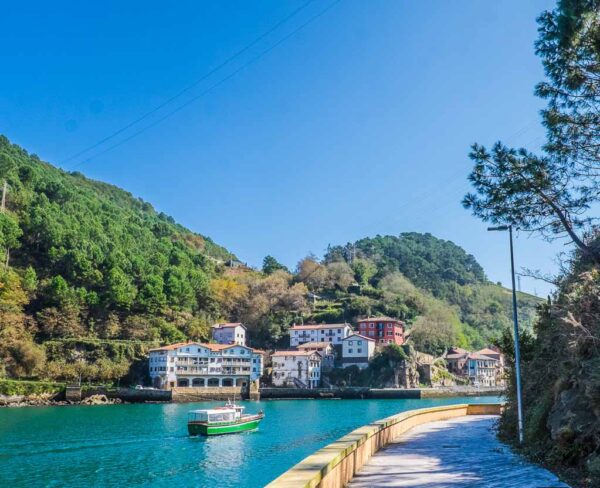
What to see in Pasaia in Guipúzcoa
pasaia It is located at the bottom of the estuary and its port is perfectly protected.
It is divided into four districts, but we think that the most attractive are those found on both sides of the port mouth.
On the western side is Passai San Pedro, which has a nice set of traditional houses.
If you walk next to the water you reach Albaola, shipyard where an exact replica of the San Juan whaler, which sank off the Canadian coast in the 16th century.
ORGANIZE your TRIP
- Don't forget your TRAVEL INSURANCE with a 5% discount
- Book the HOTEL for your trip
- RENT a CAR for your trip
- The best TOURS and EXCURSIONS in Spanish
- NO-LINE TICKETS for museums and monuments
- Best FREE TOURS around the world
- Book your TRANSFER from the airport
- eSIM card with INTERNET at the best price
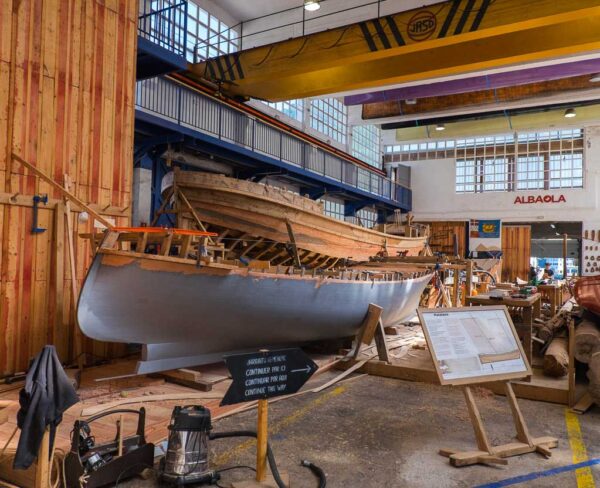
You must consult and reserve the visit in advance since it is done on guided tours at certain times.
The appearance of the estuary in this area is impressive, almost having the appearance of a norwegian fjord with the rock walls on both sides almost vertical.
In front of Passai San Pedro is Pass Saint John, with a splendid set of mansions from the 16th and 17th centuries.
One of them is a museum dedicated to Victor Hugo, who wrote several pages to highlight the charms of this fishing village and its surroundings.
There is aboat service to go from one side of the estuary to the other, and you can also go by car around the entire bottom of the estuary.
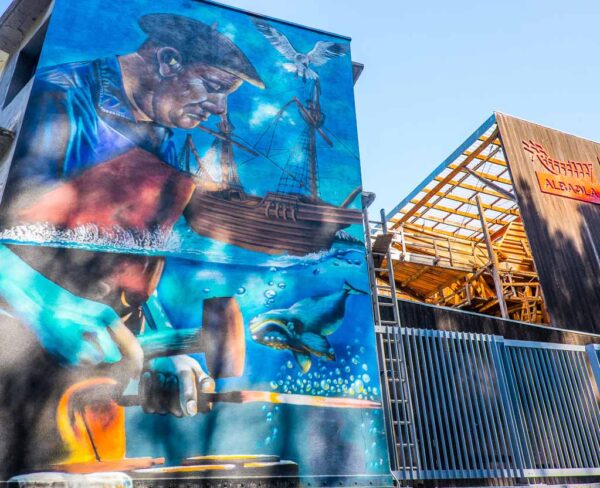
What to see about Tickets to Fuenterrabía through Jaizkibel
The ideal way to explore the area from Pass Saint John but also Hondarribia it is on foot, following the call Talaia route.
This path partly runs along the same shore and at other times goes into the heights in search of more comfortable steps, so it passes the rocky inlets of the flysch to the shady forests where ferns flank the route.
This walk allows you to discover the longest intact stretch of the Basque coast, but it should not be undertaken lightly as it can be very tiring for unprepared hikers.
If the excursion, you can always return to the point of origin in search of our vehicle by taxi, or using the bus service that connects San Sebastián with Hondarribia.
We prefer to travel through this area following the GI-3440 highway, which runs through the entire mountain range in the interior.
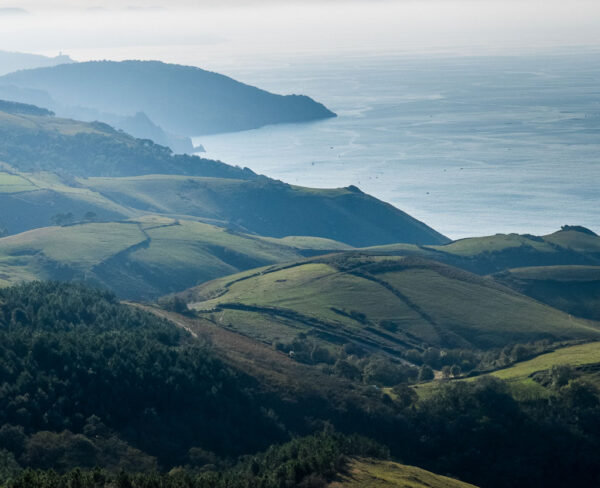
The road goes up and down adapting to the terrain and on weekends there are many cyclists and motorcyclists. We also took advantage of some stops to walk to the coast and discover some magnificent stretches of flysch.
Labetxu coast area in Jaizkibel
The area known as Labetxu It is one of the most spectacular, since it unites the beauty of the formations, which has allowed the place to be known as the Valley of colors, to the formidable solitude of this intact coast.
But there are many other corners that are also worthwhile and deserve a stop in this route through Mount Jaizkibel.
Eg sculpture Herriaren batasuna, by the sculptor Remigio Mendiburu, which is very close to the road and enjoys one of the enviable locations for any sculptor.
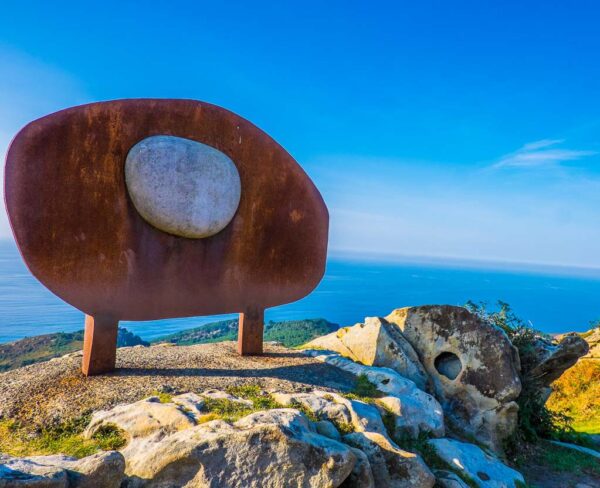
We will also see a series of towers that tell us about the strategic importance of the area.
The towers, having lost their defensive function, they become excellent viewpoints since they are always located in prominent places. From them the view flies around.
Sanctuary of the Virgin of Guadalupe in Jaizkibel
Another obligatory stop along the road is the sanctuary of the Virgin of Guadalupe, patron saint of Hondarribia.
A viewpoint offers splendid views over the final stretch of the Bidasoa River and it's time to discover the river island of Pheasants, the smallest condominium in the world and whose sovereignty is shared between Spain and France, six months a year each.
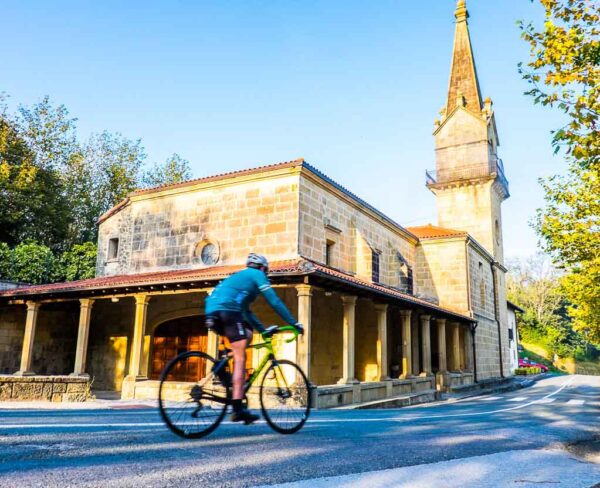
Very close to the sanctuary are the remains of the Fort of Our Lady of Guadalupe.
Don't forget your Travel Insurance
Are you organizing your trip or getaway? Don't leave without take out your travel insurance before, and here we explain why. If you hire it with us, you have a 5% discount
And before entering Hondarribia, a short detour takes us to the Cape Higer Lighthouse, right at the mouth of the Bidasoa River.
What to see in Hondarribia in Guipúzcoa
Hondarribia It has two very different parts.
Perched on a hill, the old town It is a treasure to be discovered calmly.

After their walls or medieval towers, renaissance manor houses e gothic and baroque churches that tell stories of historical figures.
El Charles V castle, turned to tourist hostel, master the Hondarribia Main Square, which is flanked by beautiful traditional houses.
Among the buildings worth highlighting are the palaces and mansions de Eguiluz, Mugarretenea, to the hole, Casadevante y EtxebesteneaIn addition to Church of the Assumption.
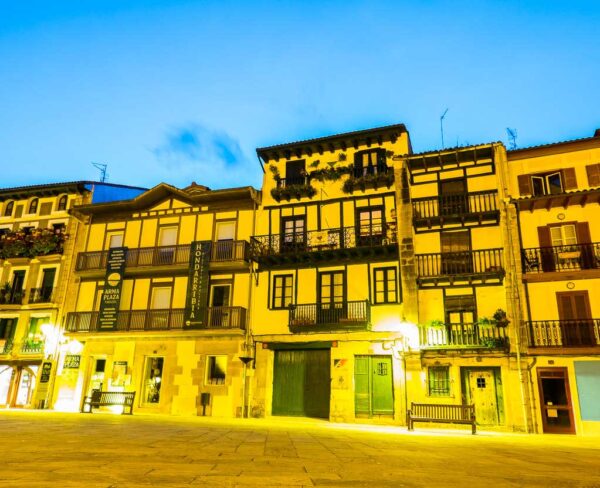
Outside the walls, the La Marina neighborhood It attracts attention for its brightly colored buildings and the good gastronomic offer of its bars and restaurants.
Both sets are declared historical-artistic monuments.


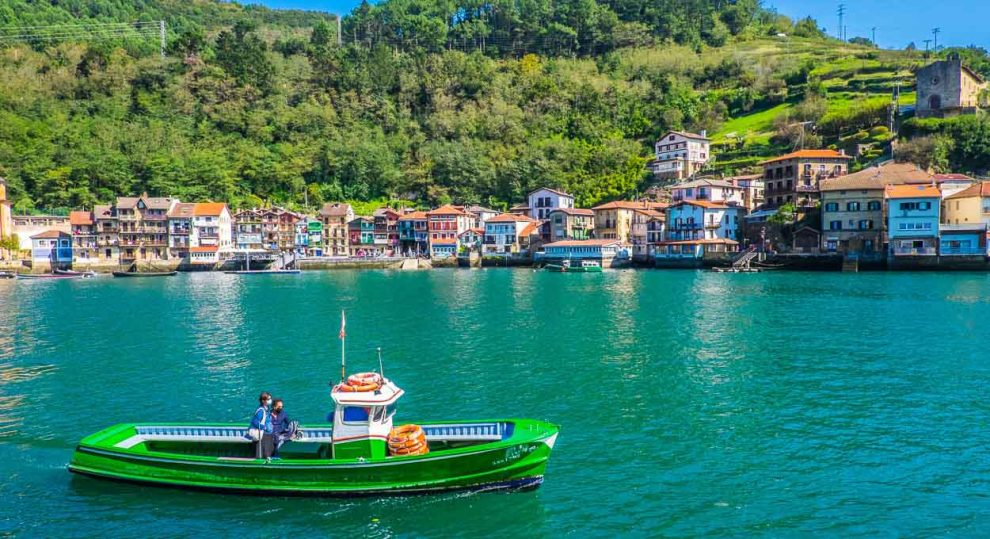

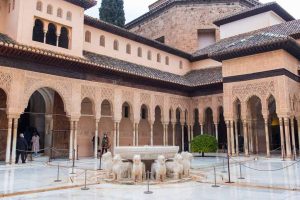
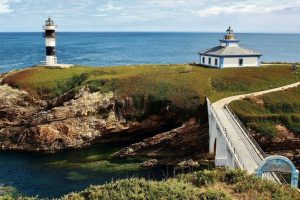











Comment